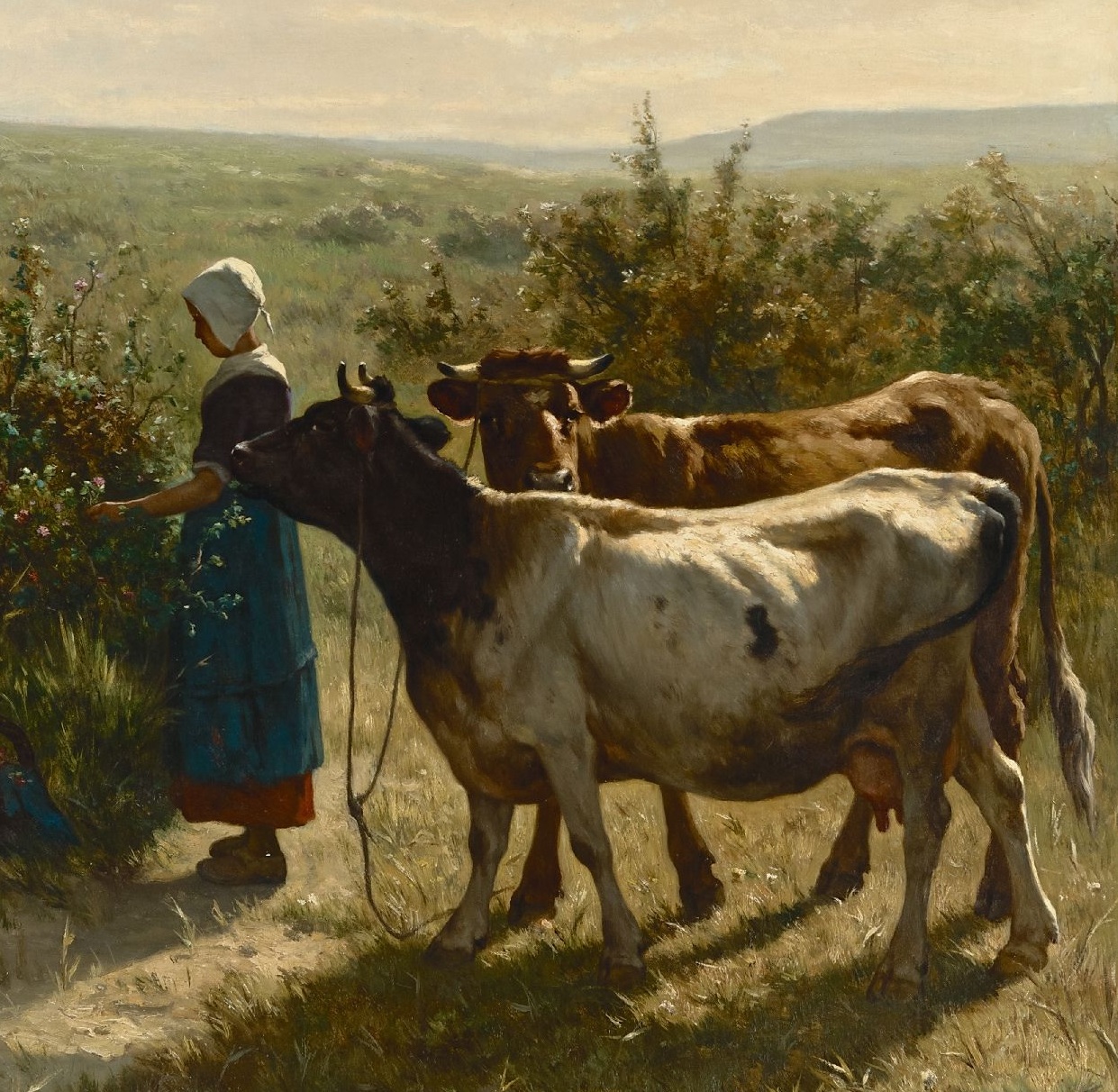Difference between revisions of "Cattle (domestic)"
Tao alexis (talk | contribs) |
Tao alexis (talk | contribs) |
||
| Line 44: | Line 44: | ||
They use much of their day to eat and lounge — when driven too hard, they will grow "nervous" and sensitive to loud noises or abrupt movement. At such times, there's a danger that a cattle herd will break into a run, starting a '''stampede'''. | They use much of their day to eat and lounge — when driven too hard, they will grow "nervous" and sensitive to loud noises or abrupt movement. At such times, there's a danger that a cattle herd will break into a run, starting a '''stampede'''. | ||
| − | When stampeding, a body of cattle may swing in any direction, even turning back on themselves. They'll wreck wagons, buildings, trees and anything else in their way. A character in their path can be easily killed by multiple horns and collective [[Incidental Damage|incidental damage]]. | + | When stampeding, a body of cattle may swing in any direction, even turning back on themselves. They'll wreck wagons, buildings, trees and anything else in their way. A character in their path can be easily killed by multiple horns and collective [[Incidental Damage|incidental damage]]. It should be assumed that one horn attack will occur per every 20 cows, while every cow is assessed for causing incidental damage. |
== Bulls == | == Bulls == | ||
Revision as of 00:47, 24 December 2021
| Detail | Cow | Bull |
|---|---|---|
| Species | bovine | |
| No. Appearing | 20-200 | 2-5 |
| Behaviour | herd | |
| Range | rural | |
| Size | 5 ft. at shoulder |
5½ ft. at shoulder |
| Weight | 1,000 lbs. | 1,330 lbs. |
| Intelligence | 1 | 2 |
| Armour Class | 7 | 6 |
| Hit Dice | 3 | 4+1 |
| Action Points | 5 | 5 |
| Max. Stride | 11 | 14 |
| THAC0 | 19 | 18 |
| Hp/Die | d4+d6 | d12 |
| Attack Forms | 2: horns | |
| Damage | horn (1-6) | horn (1-8) |
| Natural Abilities | stampede | charging, trampling |
Domestic cattle are descendants of auroch cattle, which were first tamed in the southern Caucasus and northern Mesopotamia about 7,500 years ago. Since that time, bred cattle have spread to every continent, where they thrive in nearly every climate. Much of the belligerence has been bred from the domestic species, so that they're largely indifferent to humanoids, providing they're not provoked. Some bulls still have a potential for aggression.
Behaviour
If cornered, cattle will stand and fight, but given the opportunity they prefer to move off at a steady pace until left alone. Herders are able to keep them moving through calling, tapping them along or "driving" them from horseback.
They use much of their day to eat and lounge — when driven too hard, they will grow "nervous" and sensitive to loud noises or abrupt movement. At such times, there's a danger that a cattle herd will break into a run, starting a stampede.
When stampeding, a body of cattle may swing in any direction, even turning back on themselves. They'll wreck wagons, buildings, trees and anything else in their way. A character in their path can be easily killed by multiple horns and collective incidental damage. It should be assumed that one horn attack will occur per every 20 cows, while every cow is assessed for causing incidental damage.
Bulls
____ EDIT LINE ____
Domestic Bulls are larger than cows and potentially threatening. The bull is prepared to charge if approached, dropping their heads and launching themselves 2–3 hexes (10–15 ft.) to strike with the full weight of their bodies. They will cause 3–13 damage if they hit this way. Any creature that is stunned will be knocked down and trampled by the bull for 1–4 additional damage.
See Bestiary
